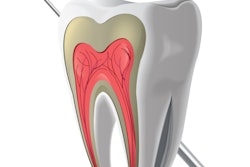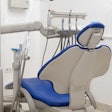
More generous Medicaid payment policies are associated with improvements in children's oral health, according to a study published on September 9 in JAMA.
Researchers evaluated whether recent changes to Medicaid dental payment policies were associated with changes in children's dental visits, oral health, and school absences. Approximately 15,800 Medicaid-enrolled and 16,900 privately insured children ages 6 to 17 who participated in the 2016-2019 National Survey of Children's Health (NSCH) were included in the study.
The American Academy of Pediatric Dentistry recommends that children visit their dentist every six months, but at baseline in the analysis of NSCH data, less than half met this recommendation. The findings indicate that 87% of Medicaid-enrolled children visited a dentist at least once in the past year, and 48% visited the dentist at least twice.
Further, 29% of the parents of Medicaid-enrolled children reported that their child had excellent oral health, and 28% had at least four school absences in the past year. Another 15% had at least seven school absences.
Recent increases in the ratio of Medicaid payment rates to dentist charges for an index of services were positively associated with rates of children's dental visits. A 10 percentage point increase in the ratio of Medicaid to private dental fees was associated with a 1.8 percentage point increase in baseline dental visits, or a 2% change. The finding is consistent with a previous study that reported the same increase in the ratio of Medicaid to private dental fees was associated with a 1.5 percentage point increase in at least one visit to the dentist in the past year.
The study also reported larger benefits for Hispanic children. In analyses by race and ethnicity, increasing the Medicaid fee ratio had the largest associations with dental visits among Hispanic children, although only the estimate for at least two visits to the dentist in the past year was significantly different compared to white children.
Researchers speculate that these larger associations among Hispanic children may be due to differences in location characteristics, such as how many local dentists there are and access to federally qualified healthcare centers.
"Larger sample sizes to further investigate subgroup differences and research to enhance understanding of the role of specific neighborhood, familial, and local policy factors in children's dental care access are important considerations for future studies," wrote the study's authors, led by Brandy Lipton, PhD, of the University of California, San Diego.
Poor oral health has been associated with more school absences and lower grades in children, which raises the possibility that policies that improve children's oral health may also improve academic outcomes. However, it is also possible that children with poor oral health may sustain school absences to receive dental treatment.
In the present study, researchers found that girls had a significant decrease in having at least seven school absences following a decrease in the Medicaid fee ratio. Researchers hypothesized that male and female children may communicate differently about health concerns, such as oral pain, which may lead to disparities in parental awareness of children's unmet needs.
"The potential for improvements in children's oral health and reductions in school absences may be important considerations in state assessments of Medicaid fee schedules" Lipton and colleagues concluded.



















